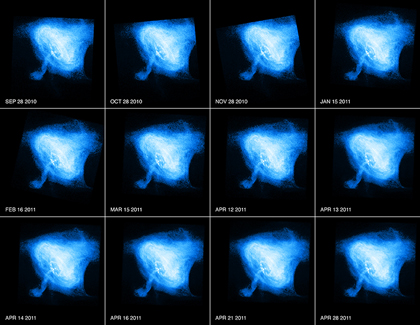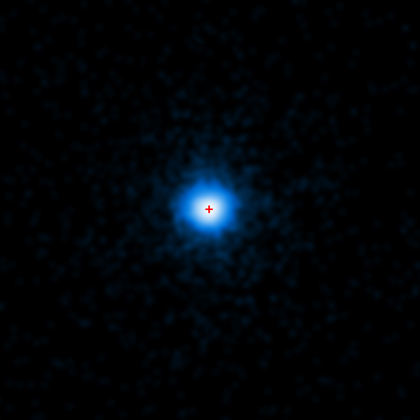Chandra: Promises Made and Kept
A promise made is a debt unpaid. Robert Service
Chance favors the prepared mind. Louis Pasteur
Not long ago a request came down from above for a list of Chandra’s achievements that have “completely transformed the way we have viewed our world, solar system, sun, or universe."
In other words, how many discoveries of the century have you made this year?
The Crab in Action & The Case of The Dog That Did Not Bark
A new movie from NASA's Chandra X-ray Observatory shows a sequence of Chandra images of the Crab Nebula, taken over an interval of seven months. Dramatic variations are seen, including the expansion of a ring of X-ray emission around the pulsar (white dot near center) and changes in the knots within this ring.
From Science Olympiad to Scientist: Jeffrey Silverman
As part of our efforts to work with the formal education community (that is, generally K-12 schools), the Chandra EPO team works with the National Science Olympiad. The Olympiad is an excellent science competition that involves middle and high school teams from all 50 states, often getting kids involved at an even earlier age.
Jeffrey Silverman was part of the very successful Science Olympiad team from Troy High School (Fullerton, CA) team in 2001. He is now finishing his Ph.D. in astrophysics from the University of California at Berkeley, where he works mainly on exploding stars known as supernovas including 2006gy and this recent news-grabbing event. We asked Jeffrey to share with us some of his experiences during the Science Olympiad and how they helped shape his choices once he got to college and now into graduate school and beyond.
NASA'S Chandra Finds New Evidence on Origin of Supernovas
This Chandra image of the Tycho supernova remnant contains new evidence for what triggered the original supernova explosion. Tycho was formed by a Type Ia supernova, a category of stellar explosion used in measuring astronomical distances because of their reliable brightness. In the lower left region of Tycho is a blue arc of X-ray emission. Several lines of evidence support the conclusion that this arc is due to a shock wave created when a white dwarf exploded and blew material off the surface of a nearby companion star.
"From Earth to the Solar System Lifts" Off
We are very excited to announce the launch of a new – and yet somewhat familiar -- project. Today, “From Earth to the Solar System” officially opens. As the name implies, FETTSS (our new favorite acronym) is a direct descendent of the “From Earth to the Universe” project.
Hunting for the Milky Way's Heaviest Stars
Like looking for Easter eggs in a lawn of long grass, the hunt for the Milky Way's most massive stars takes persistence and sharp eyes. In their stellar search through our Galactic backyard, astronomers have used powerful telescopes sensitive to X-ray and infrared radiation to find evidence for a substantial population of X-ray emitting massive stars.
Flute Duet Like no Other
Cady Coleman was one of the astronauts who helped launch Chandra aboard the Space Shuttle Columbia back in July 1999. While we have always appreciated her many talents -- chemist, Air Force officer, astronaut, and mother -- we didn’t realize that we were missing out on another: flutist.
Chandra Observes Extraordinary Event
The center of this image contains an extraordinary gamma-ray burst (GRB) called GRB 110328A, observed with NASA's Chandra X-ray Observatory. This Chandra observation confirms the association of GRB 110328A with the core of a distant galaxy and shows that it was an exceptionally long lived and luminous event compared to other GRBs.
2011 Einstein Fellows Announced
This week, NASA announced the selection of three prestigious fellowships, each named after a distinguished scientist: Einstein, Hubble, and Sagan. Every year, NASA awards these fellowships to recent Ph.D.s in astronomy, physics or a related field. The Chandra X-ray Center oversees the Einstein Fellowships, which cover the topics in high-energy astrophysics. The Space Telescope Science Institute runs the Hubble Fellowships, and JPL is in charge of the Sagan ones.




